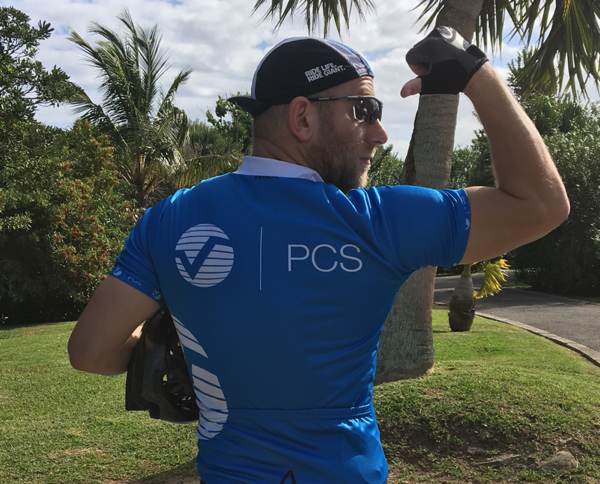Silent pandemic risk as akin to silent cyber. It’s an exposure that is potentially secreted deep inside numerous lines of insurance and reinsurance business, with claims governed by contractual fineries and wordings. As a result it’s an exposure that is hard to quantify, but that may require hedging.
 At a time when interest in pandemic insurance, reinsurance and retrocessional protection continues to rise on the back of the ongoing coronavirus outbreak, it’s appropriate to look at where risks may lie and where the risk transfer solutions may come from, both in terms of form and capital source.
At a time when interest in pandemic insurance, reinsurance and retrocessional protection continues to rise on the back of the ongoing coronavirus outbreak, it’s appropriate to look at where risks may lie and where the risk transfer solutions may come from, both in terms of form and capital source.
We spoke with Tom Johansmeyer, Head of PCS (part of Verisk) to discuss silent pandemic risks and exposure, where it could erupt from and what the industry can do to protect itself against it.
1. What is “silent pandemic” risk?
Doubtless, by now, we’ve all heard of “silent cyber” – the risk that non-cyber covers may inadvertently pay out as a result of ambiguous wordings or absent any specific treatment of cyber. We’re hearing about a similar risk from pandemic, particularly in the large risk market (e.g., single property risks of several hundred million dollars or more). There’s a concern that at least some big programs out there might not have tight enough language around physical damage, which could ultimately be leveraged to cause business interruption to kick in.
2. Why are people thinking about this?
Well, Steve, it’s mostly because of cyber. Think back to the NotPetya event in 2017. Several large property programs were affected because of the “silent cyber” issue. They were affected, industry-wide, to an estimated total of around US$3 billion. Two programs alone accounted for approximately US$2.5 billion of it. Today, pandemic is of course on our industry’s collective mind. And as insurers and reinsurers try to understand how they could be affected, it’s not hard to remember what happened to the property risk market in 2017 – particularly since the losses are still developing.
The question has less to do with cyber or pandemic (or anything else) and more to do with physical damage. In any “silent” scenario regarding big property programs, the risk that capacity providers face is that an implication for sufficient physical damage will be found that’s either hard to contest or that finds some amount of support in the wordings. There’s further risk that the manuscript form used may have some amount clarity on issues like physical damage – and even have broad enough adoption that many will be familiar with it. But, soft markets lead to amendments that can erode original terms and conditions, and such amendments may not be standard – or even remembered. That’s when surprises begin to emerge.
3. Could this be a systemic issue?
I’ve spoken with a number of people about this, and none believes the silent pandemic issue is systemic – just as it wasn’t from silent cyber back in 2017. However, it does seem likely that a few programs could be affected. After all, if you have a large, global original insured with sufficiently complex operations to warrant several hundred millions of dollars in property insurance and a small physical damage threshold, there’s a fairly broad belief that a handful of companies will find a way.
4. So, it’s a more focused problem then?
Yes, and for reinsurers, it could be a particularly thorny one. There could be a few risks in your portfolio that could be exposed to enough physical damage risk via COVID-19 to result in large enough business interruption losses to affect your portfolio. But, you aren’t sure which programs are the problem. And you may not have all the policy language you need or other data. So, there’s a sense that a portfolio may have a problem or two. There isn’t enough data to really understand the problem, and the policy language may not be available. Even if it was, there’d probably be too much to review and then probably some gray areas on top of that.
5. That sounds like a pretty difficult risk to hedge?
On a traditional basis, yes. You’d need to structure a blanket hedge that just passes a portion of the risk along. If you could find a market for that, the rate on line would probably be prohibitive. More realistically, the solution would be a single risk ILW. Something like a single risk of at least US$1 billion (or whatever threshold makes sense) with a worldwide scope, and maybe you could bring the rate on line down with named company exclusions. We’ve seen some indication from the cyber market that that sort of thinking can make a difference.
Of course, timing is everything. Right now, the market is in the process of tying up the reinsurance renewal for Japan and will then turn almost immediately to Florida. It could be difficult to compete for capacity to support a single risk ILW. Waiting further into the year, though, poses its own problems. In particular, if the COVID-19 situation continues to develop, even single risk ILW pricing could become prohibitive. There’s no substitute for getting in front of this issue now.
Also read: Pandemic parametric triggers Q&A with Tom Johansmeyer, PCS.
 View all of our Artemis Live video interviews and subscribe to our podcast.
View all of our Artemis Live video interviews and subscribe to our podcast.
All of our Artemis Live insurance-linked securities (ILS), catastrophe bonds and reinsurance video content and video interviews can be accessed online.
Our Artemis Live podcast can be subscribed to using the typical podcast services providers, including Apple, Google, Spotify and more.































